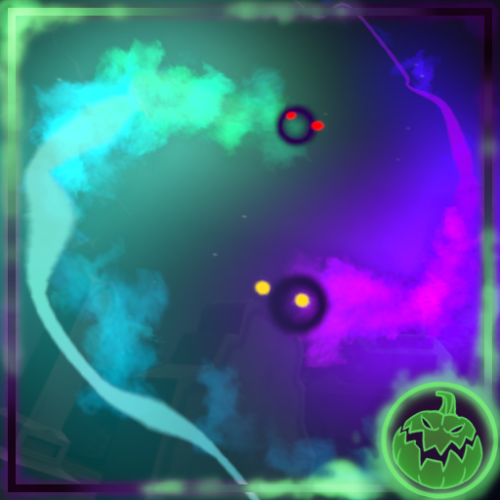#particle
SHOWREEL 2017
Hi! I’m happy to present you my new showreel.
All my recent personal projects, from work and school stuff, made using mostly Maya, C4d and After Effects.
Hope you will like it!
Making a Toon Fire in Unity with some minor edits to shaders
Masked shader : http://pastebin.com/rDpfjM5F
Masked Particle Additive : http://pastebin.com/VEWGYEZp
More here : >Patreon Link<
Now you can make toon fire in Unity!
I’ve been working on A Hat in Time for the past year, and now that it’s out I can finally show off my VFX reel for it!
Working on this team with all these talented people was absolutely amazing and I don’t even know where to begin about it. Plain and simple it was incredible and I hope to keep working with such awesome people.
The final Frontline unusual effect! Mass Precipitation!
Click on the above image to go to the steam workshop page for it or click on this text to be taken to the Team Fortress 2 Frontline Project page!
Post link
Worked with @hyperchaotixanimation on an unusual effect for the new Team Fortress 2 Mayann project! To go vote for it on the steam workshop just click the top image.
Post link
Some people had been asking for me to upload the sharp anime-like lens flare I used in The Wonderful 001, so here ya go!
Click on the image to go to the workshop page.
Post link
I present to you my first unusual effect for the Team Fortress 2 Workshop of Horrors community event!
If you like it, go vote for it on the Steam Workshop by clicking on the picture above!
Post link
When describing the trajectory of a point particle in space, we can use simple kinematic physics to describe properties of the particle: force,energy, momentum, and so forth. But are there useful measures we can use to describe the qualities of the trajectory itself?
Enter the Frenet-Serret (or TNB) frame. In this post, we’ll show how to construct three (intuitively meaningful) orthonormal vectors that follow a particle in its trajectory. These vectors will be subject to the Frenet-Serret equations, and will also end up giving us a useful way to interpret curvature and torsion.
First, we define arc length: let s(t) = ∫0t||x’(τ)|| dτ. (We give a quick overview of integration in this post.) If you haven’t encountered this definition before, don’t fret: we’re simply multiplying the change in position of the particle x’(τ) by the small time step dτ summed over every infinitesimal time step from τ=0 to τ=t=”current time”. The post linked to above also explains a short theorem that may illustrate this point more lucidly.
Now, consider a particle’s trajectory x(t). What’s the velocity of this particle? Its speed, surely, is ds/dt: the change in arc length (distance traveled) over time. But velocity is a vector, and needs a direction. Thus we define the velocity v=(dx/ds)⋅(ds/dt). This simplifies to the more obvious definition dx/dt, but allows us to separate out the latter term as speed and the former term as direction. This first term, dx/ds, describes the change in the position given a change in distance traveled. As long as the trajectory of the particle has certain nice mathematical properties (like smoothness), this vector will always be tangent to the trajectory of the particle. Think of this vector like the hood of your car: even though the car can turn, the hood will always point in whatever direction you’re going towards. This vector T ≡ dx/ds is called the unit tangent vector.
We now define two other useful vectors. The normal vector: N ≡ (dT/ds) / ( |dT/ds| ) is a vector of unit length that always points in whichever way T is turning toward. It can be shown — but not here — that T⊥N. The binormal vector B is normal to both TandN; it’s defined as B≡TxN. So T, N, and B all have unit length and are all orthogonal to each other. Since T depends directly on the movement of the particle, N and B do as well; therefore, as the particle moves around, the coordinate system defined by T, N, and B moves around as well, connected to the particle. The frame is always orthonormal and always maintains certain relationships to the particle’s motion, so it can be useful to make some statements in the context of the TNB frame.
The Frenet-Serret equations, as promised:
- dT/ds = κN
- dN/ds = -κT + τB
- dB/ds = -τN
Here, κ is the curvature and τ is the torsion. Further reading (lookup the Darboux vector) illustrates that κ represents the rotation of the entire TNB frame about the binormal vector B, and τ represents the rotation of the frame about T. The idea of the particle trajectory twisting and rolling nicely matches the idea of what it might be like to be in the cockpit of one of these point particles, but takes this depth of vector analysis to get to.
Bonus points: remember how v=Tv, with v the speed? Differentiate this with respect to time, play around with some algebra, and see if you can arrive at the following result: the acceleration a = κv2N + (d2s/dt2)T. Thoughtful consideration will reveal the latter term as the tangential acceleration, and knowing that 1/κ ≡ ρ = “the radius of curvature” reveals that the first term is centripetal acceleration.
—
Photo credit: Salix albaaten.wikipedia
Post link






